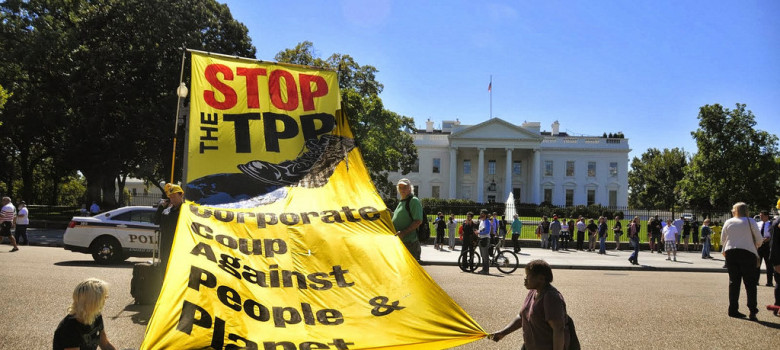In one of his first acts in office, U.S. President Donald Trump has signed an executive order withdrawing the United States from the Trans Pacific Partnership. With the U.S. out of the TPP, the agreement cannot take effect as it requires ratification from both the U.S. and Japan to do so. Last week, new International Trade Minister Francois-Philippe Champagne said that Canada would consider all its options with the remaining TPP countries, but the reality is that Canada should follow the U.S. lead and abandon the agreement.
The need for U.S. and Japanese ratification for the TPP to take effect is no accident. For most of the countries in the TPP, access to those two markets were the reason they were willing to sign in the first place. For example, Canada came late to the TPP negotiations in part because it saw limited value in better access to markets such as Australia, Vietnam, Malaysia, and New Zealand. Trade with those countries is relatively minor and would not justify making significant policy concessions. The decision to join the negotiations was sparked by concern that preferential access to the U.S. would be undermined if Canada was left out of the TPP and by a desire to strike a trade agreement with Japan. Once Japan shifted its focus from bi-lateral discussions to the TPP, Canada pushed for inclusion in the deal. With the U.S. out, one of the foundational arguments for joining the TPP is gone.
Moreover, the TPP text reflects the power of the U.S. in the negotiations. For example, the extension of the term of copyright stems from a U.S. demand, since many TPP countries have terms that mirror Canada’s life of the author plus 50 years. For Canada to move forward with an agreement that does not offer the benefits of better access to the U.S. market, cannot be enforced (since it cannot take effect), and which involves provisions of little interest to many other TPP members does not make sense.
The future of Canadian trade policy is clearly now wrapped up the NAFTA renegotiation, the attempts to push CETA over the finish line, and efforts to kickstart bi-lateral trade negotiations with the major Asian countries, including China, Japan, and India. Many TPP provisions may resurface in the NAFTA talks (despite today’s withdrawal, the TPP will likely serve as a blueprint for U.S. negotiators on many issues), but conceding on those issues without clear U.S. gains would not advance Canadian interests and would weaken the NAFTA negotiating position with the U.S.
The Canadian government has been consulting on the TPP for about a year and has yet to adopt a firm position on the agreement. As I chronicled extensively last year, there are significant problems with the TPP. The U.S. withdrawal offers the chance to hit the reset button by pursuing a renewed Canadian trade agenda featuring greater transparency, public participation, and preservation of the national interest.








Pingback: Le retrait des USA de l’accord de partenariat transpacifique – Droit anglo-américain des propriétés intellectuelles
Donald trump is a very Dangerous guy for the entire world,hope he gets impeached
Pingback: Freeland on the TPP: Taking the U.S. Out Changes a Delicately Balanced Deal - Michael Geist
Pingback: Freeland Admits: U.S. Withdrawal Effectively Kills TPP Trade Deal – The Canadian Progressive
Pingback: Stephen Harper says "big multilateral trade deals are dead" – The Canadian Progressive
Pingback: The International Trade Committee's TPP Report: Clarifying the Liberal, Conservative, and NDP Policies on Asia-Pacific Trade - Michael Geist